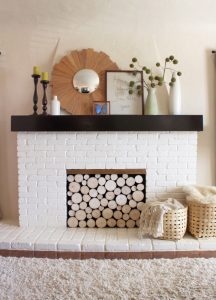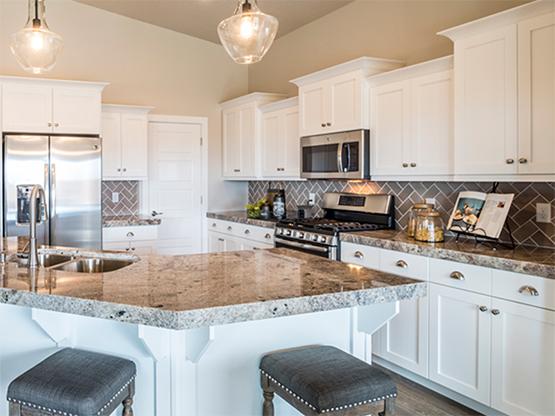By Kathy McCleary
Pick a color, any color.
If only choosing a color palette for your interiors was that easy. It can be, thanks to designer Mark McCauley. The author of Color Therapy at Home: Real Life Solutions for Adding Color to Your Life, he offers eight tips to help you discover your color preferences and take on white walls.
Tip #1. Choose a color scheme from the largest pattern in the space.
If you’ve got patterned upholstery, an Oriental rug or large piece of artwork, pluck colors you like from the pattern. For a neutral wall paint color, look to the pattern’s whites and beiges.
Tip #2. Start with the formal areas of the house.
Specifically, the living room, dining room and entry way. Choose a color scheme for those areas first, then pull one color from the scheme. For example, take the red sofa and tone it down (say, to burgundy) for an accent in more private spaces such as the den, office or bedroom.
Tip #3. Decorate your space from dark to light, vertically.
A real “cookbook” way to make any space look good without much risk, McCauley says, is to use darker color values for the floor, medium color values for the walls and light values for the ceiling.
“Any interior space replicates the outside world,” he says. “The exterior environment is generally darker below our feet (the earth itself), medium-valued as you look straight ahead (buildings/trees) and lighter values skyward.”
Tip #4. Study the color of your clothes.
Most people buy clothes in colors they like to wear and think they look good in. Similarly, you should decorate your rooms in colors you look good in. “If you don’t wear yellow, don’t get a yellow sofa,” McCauley says. “You’re going to look sickly on it.”
Tip #5. Use the color wheel.
In general, analogous color schemes — colors next to each other on
the color wheel, such as blue and green — are more casual and relaxing, and work best in informal or private spaces. This is a good strategy for a bedroom, where you want to rest and recover.
Whatever color scheme you choose, McCauley advises to put something black in every room. “The black clarifies all the rest of the colors in the room,” he says. Try a black lampshade, a black vase or a black picture frame.
Tip #6. Use the rule of 60-30-10.
“When decorating a space, divide the colors in the space into components of 60 percent of a dominant color, 30 percent of a secondary color and 10 percent of an accent color,” McCauley says. The walls will most likely be the majority, the upholstery would represent the secondary color and accessories such as a floral arrangement or throw pillows would make up the rest. “Works every time!” he says. “The colors are properly balanced and there is a shot of color (the 10 percent color) for interest.”
Tip #7. Go with the architecture.
If you have a small room in your house, don’t paint it white to make it seem bigger. Instead, cozy up to its architecture with a rich, warm color scheme. Let your big rooms expand with light, and your small rooms wrap you up and nurture you.
Tip #8. Follow your personal style.
If you decorate honestly, other people will appreciate it because it’s you, even if they’d never decorate their own house in the same way. That means if you want to make every room in your house red, white and blue, go for it. You can make any color look good as long as it’s your taste.
http://www.hgtv.com/decorating/how-to-choose-a-color-scheme/pictures/page-4.html













